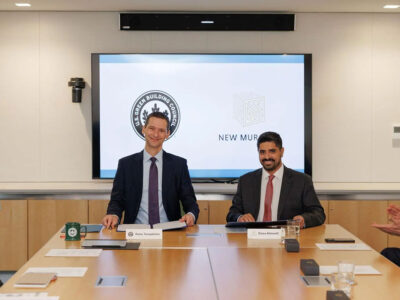Water use, although a topical subject the world over, is even more prominent in countries enduring an arid climate such as Dubai’s. While golf courses are big business and important for tourism revenues, they also require large amounts of water, to irrigate the landscape on which the game is played.
Globally, golf courses have come under fire, often undeservedly, for the amount of water needed to keep the grass playable. As a result the golf industry has taken many steps to achieve a reduction in water consumption, and make the courses less reliant on potable irrigation sources.
In recent years, emerging technologies have improved the efficiency of the irrigation system.
The idea of sustainability in water use is that water taken from an ecological source should not exceed its natural replacement rate. As Dubai lacks fresh water ecosystems and experiences little rainfall, this is close to impossible. Following a study by the US Geological Survey it was found that irrigation alone makes up some 34% of a country’s total water use, substantiating the need for conservation. While this figure is not solely down to golf courses there is a very strong desire within the golf course management industry to optimise water use.
The reasons for this are to conserve water, allow correct management of specific grass types, to maintain a high quality playing surface, and to reduce both water and power costs.
The industry has sought several solutions to the problem, such as the development of new grass varieties, which use less water or can tolerate poor quality water. These advances are significant, especially for the Middle East region where fresh water supplies are at a premium and in scarce supply.
These revolutionary grasses mean that future courses now have an alternate option, allowing them to reduce the use of potable water significantly. For existing courses that are already operational, the cost of replacing the turf would be very high, so different strategies are required. Over recent years, emerging technologies have improved the efficiency of the irrigation system and this is now playing a key role in the management of water.
One of the main tools existing today for golf course superintendents is irrigation controllers. These act as an integral part of any irrigation system. Irrigation controllers have been available for many years in the form of mechanical, electromechanical and basic PC-based irrigation timers.
These devices have since evolved into complex computer-based systems that allow accurate control of water, energy, and chemicals, as well as the constant monitoring by on-site weather stations. These weather stations automatically calculate evapotranspiration – the amount of water lost from the grass, and can adjust irrigation schedules to replace either the amount of water lost through evapotranspiration – or just a proportion of it.
These systems can allow the superintendent to fine tune and adjust operation of individual sprinklers in direct response to localised irrigation influences such as shade, grass type, slopes and wind exposure. The result is the most efficient use of water across the entire golf course.
Central controller irrigation systems are now so sophisticated, they enable you to control and monitor multiple sites and weather sources, from one location. Self-monitoring features find open and shorted circuits, activate alarms and pagers, and can shut the system down automatically if necessary. Independent programming allows control of each station in any sequence, with multiple repeats and pauses.
The irrigation schedules can easily be managed to meet complex watering requirements and multiple sites can be scheduled for days to water, run times, cyclical scheduling, linking schedules, sensor starts, and cycle and soak schedules. They can also be programmed to operate lighting, fountains, and security gates.
The water conservation benefits of these systems are clear; they deliver the most efficient use of water using sophisticated on-site weather stations, weather reporting services and other resources, to determine accurate daily irrigation replacement needs, thus reducing over-irrigation.
They also provide financial benefits, due to the superiority of the systems. Where once a team of staff would be needed to oversee the irrigation, one central system, which can be easily managed by the superintendent, can now control the entire course.
The golf industry continues to recognise its responsibility in the conservation of water and along with new technologies, such as the irrigation controllers, now has many other procedures in place, helping to minimise waste water and protect this vital resource.
Best management practices result in golf course maintenance that means less water use, alternative water sources that reduce or eliminate the use of potable water, golf course design concepts that minimise the area maintained with grasses that require considerable use of water and programmes that educate golf course superintendents and other water users about opportunities for ongoing water conservation.
Graeme Francis spent 25 years in the golf course and sports field irrigation industry, both in contracting and working for Toro’s national distribution companies.He joined Hydroturf in 2008 as the GM for Golf Course Irrigation across the GCC countries and also for Hydroturf’s Abu Dhabi office. Particular focus has been on developing the after sales aspects of the Toro Irrigation Distributorship.
The opinions expressed in this column are of the author and not of the publisher.





